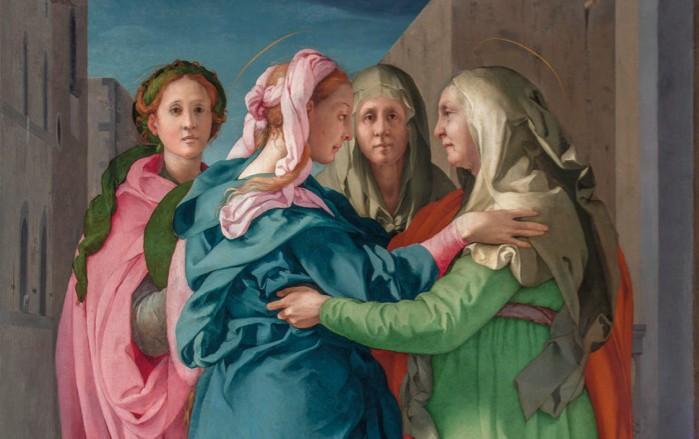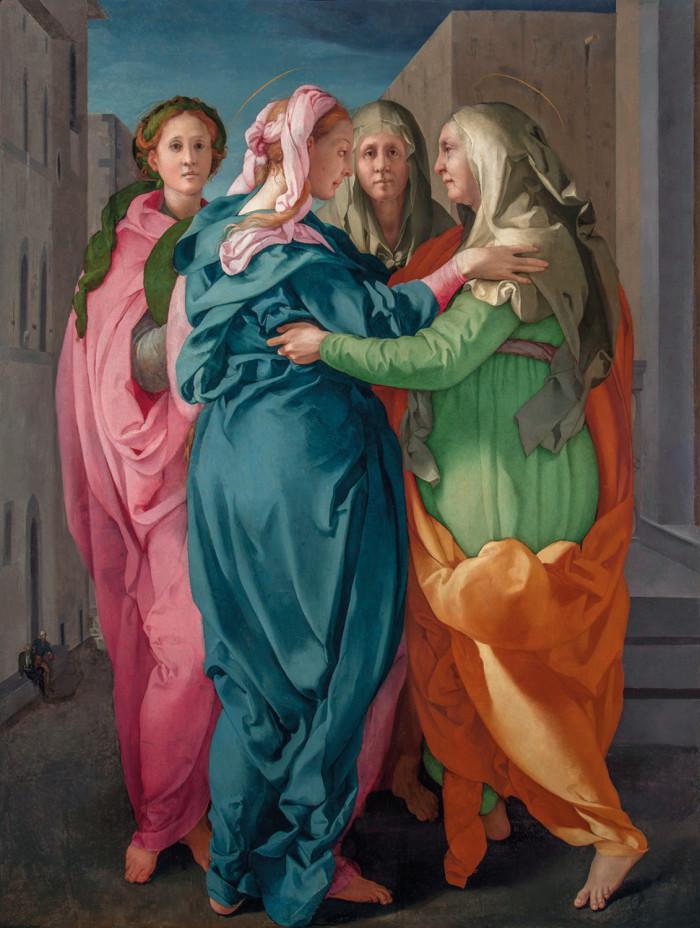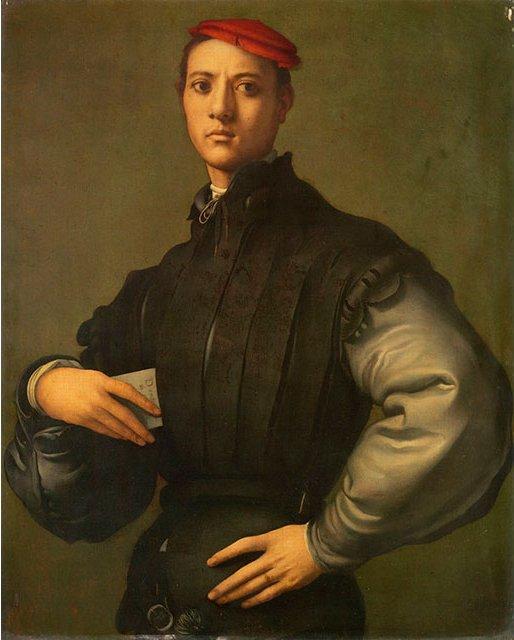New York, NY — Jacopo da Pontormo (1494–1557) was one of the most extraordinary painters and draftsmen of sixteenth-century Florence. By the end of the 1520s, he had created one of his most moving and groundbreaking works, the Visitation. For the first time, this masterpiece of Mannerist art is traveling to the United States as the focus of the exhibition Pontormo: Miraculous Encounters.
Organized in collaboration with the Gallerie degli Uffizi in Florence and the J. Paul Getty Museum in Los Angeles, the exhibition places the altarpiece in the context of a selection of other exceptional works by the artist and offers new insights into Pontormo’s creative process and the Visitation’s iconography, origin, interpretation and patronage.
The Visitation is the pride of the Pieve dei Santi Michele e Francesco, a small parish church located in Carmignano, a picturesque town west of Florence. Standing over six feet tall, it depicts the intense moment of encounter between the Virgin Mary, shown at left, and her cousin Elizabeth, who reveal to each other that both are pregnant. Mary is pregnant with Jesus and Elizabeth with John the Baptist. According to Catholic tradition, this visit, recorded in the Gospel of Luke, was believed to bring divine grace to both Elizabeth and her unborn child, who recognized the presence of Jesus.
Breaking with traditional iconography, Pontormo created a deeply personal version of the miraculous encounter. The event takes place on the streets of the town where Mary had gone to stay with her cousin. Pontormo eliminated most of the narrative details of the encounter and instead focused on the two sacred figures, accompanied by their female attendants, in fluttering garments and with their heels raised in motion. In the background is a cityscape that depicts the door to the house at the far right along with buildings on the left that frame the scene. Two tradesmen engaged in conversation linger in the bottom left corner, while a Florentine housekeeper hangs a cloth from the window of a once-abandoned palazzo. In this altarpiece, Pontormo captured both the human and spiritual elements of the encounter in a composition that has influenced artists from De Chirico to Bill Viola.



























